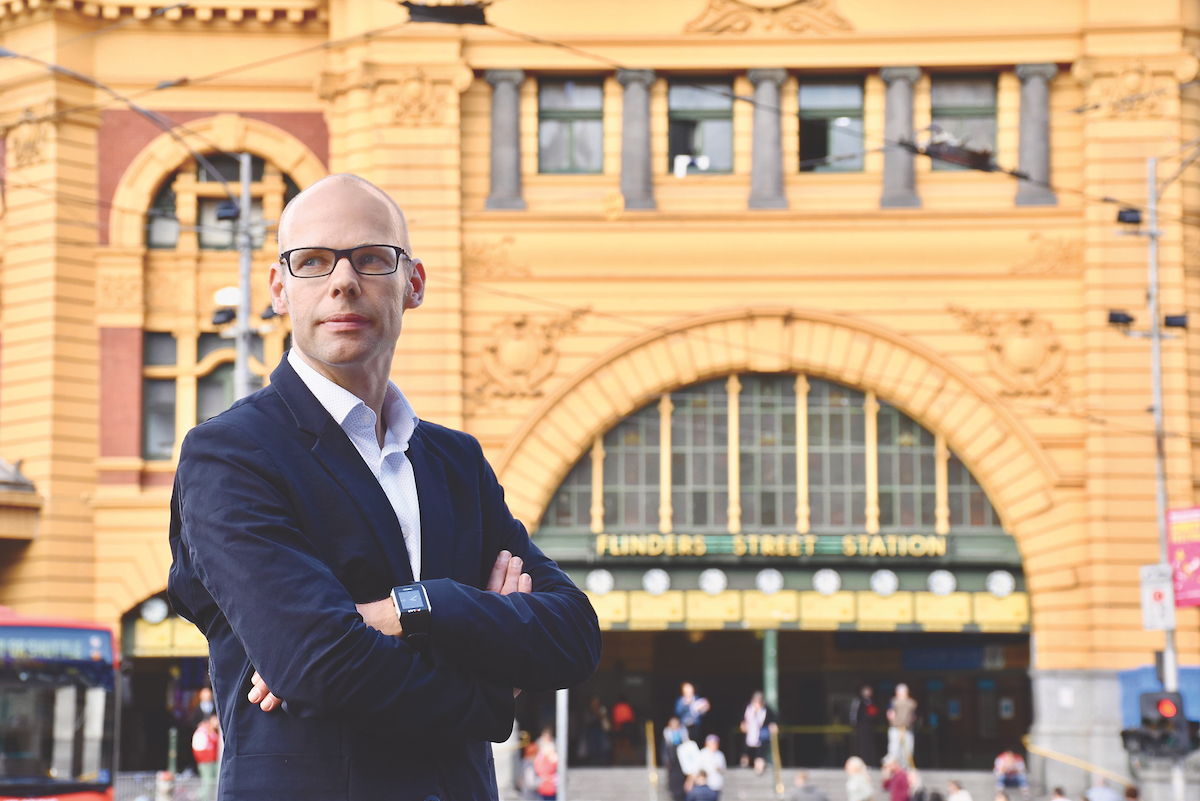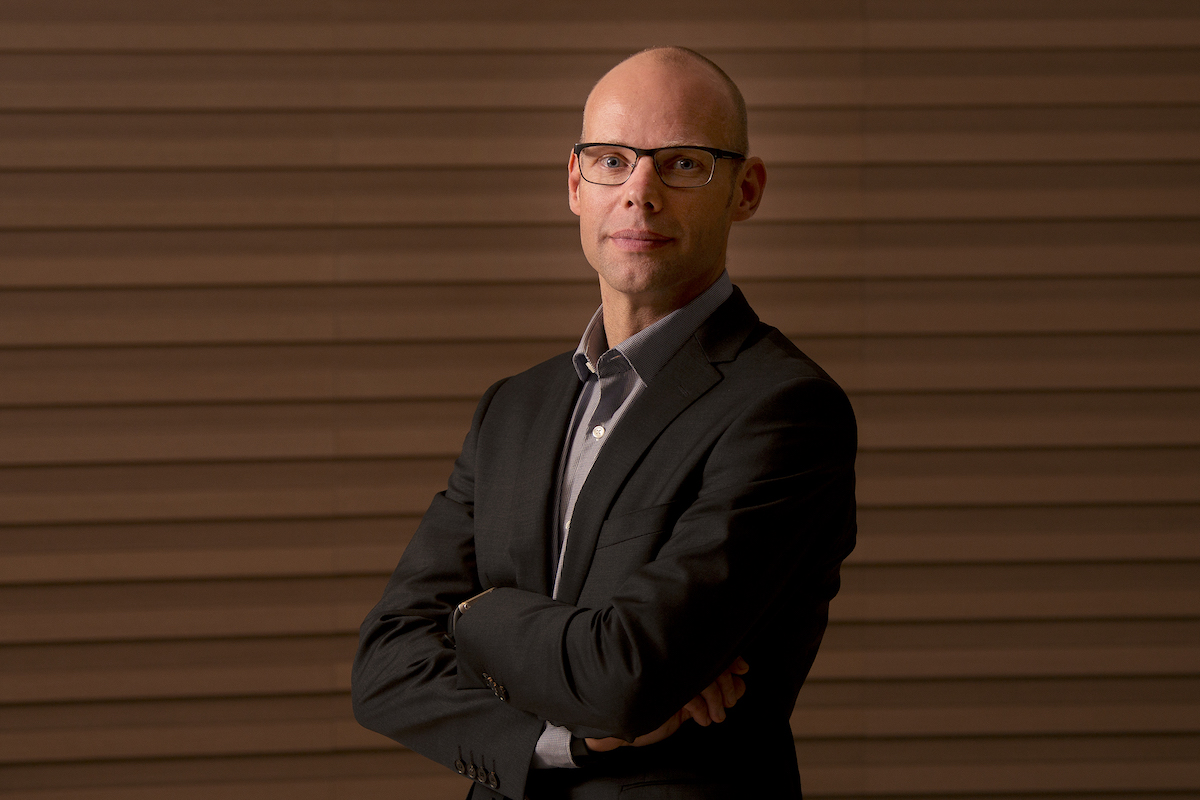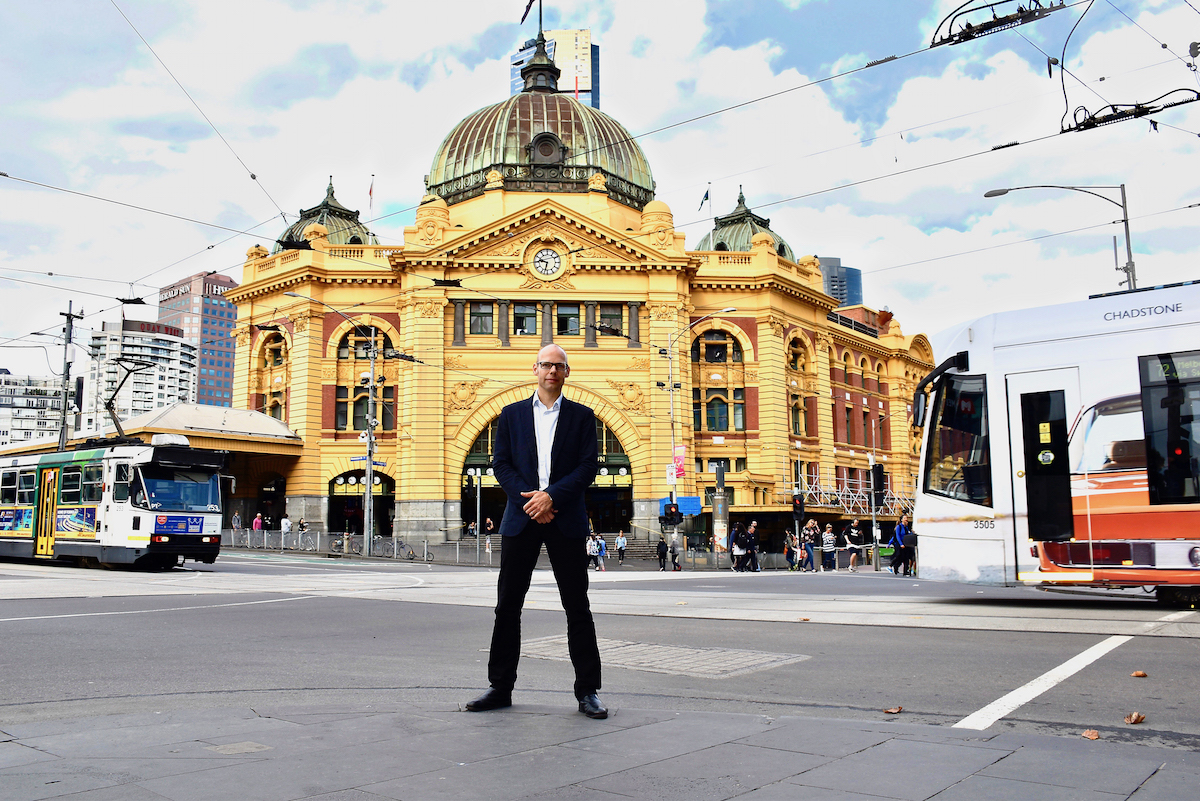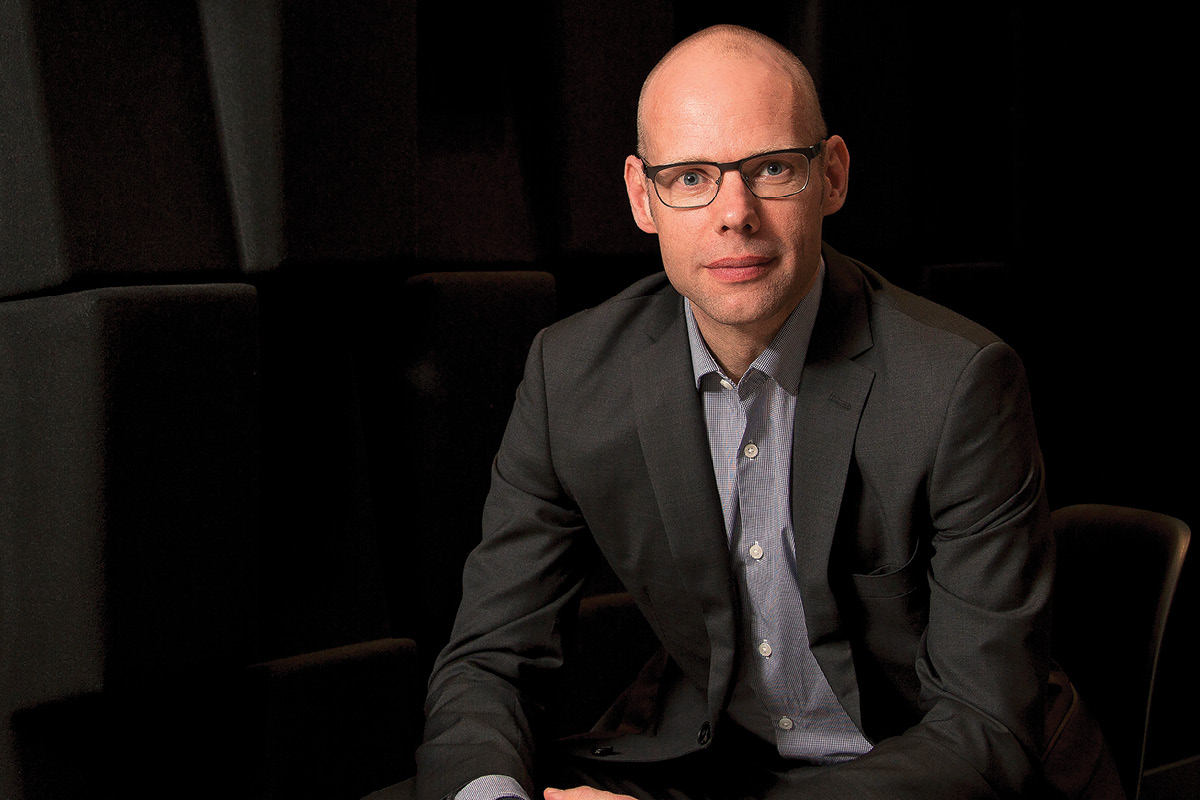Over the past 10 years, Melbourne has witnessed a 46% increase in public transport use. During the same period, car use has risen by only 8%. This trend – combined with more than 2,000 people moving to the city every week and a growing population concentration in the CBD – has led to the Victorian Government committing billions of dollars into a significant overhaul of the train, tram and bus networks.
“Public transport is growing very strongly, and that’s where the future is,” says Jeroen Weimar, who heads up Public Transport Victoria (PTV) as CEO. “Public transport will become the future enabler, the circulation system for the metropolis and for the wider state. It’s what holds the whole city together.”
The last time Melbourne saw anything like this – this kind of scale of focused investment going on – was around 35 years ago.
This large-scale, but necessary, investment program to modernise the state’s public transport system is still in its early stages. Jeroen comments that each mode of transport will be positively affected, adding that it will take around 10 years to roll out completely. “It’s a huge undertaking,” he says. “The last time Melbourne saw anything like this – this kind of scale of focused investment going on – was around 35 years ago when the CBD tunnel was built. The scale we’re doing now is akin to doing multiple cities at the same time.”
Melbourne is a growing metropolis
Jeroen believes that one of the successes in Melbourne that has led to the need for this investment is that the city has seen a real regeneration within its inner suburbs over the past 20 or so years. “People want to live in Melbourne,” he notes. “They want to be part of this growing metropolis. We are seeing nearly 2,000 people a week move to the most liveable city in the world. We’ve got a huge suburban footprint, but the core of the city is quite compact. There’s a very strong, visible public transport network that really holds that inner suburban area together.

“For millions of people, the public transport system is the most effective way for them to get around. It’s their first choice for travel; it’s the easiest and quickest mode of transport. That’s a big part of why more and more people are using the network. So, for me and my team, the questions are: How do we continue to invest in more services? How do we improve the frequencies of our trains, trams and buses? How do we ensure that we’re giving everybody space on our network? PTV will need to keep working harder and harder to put more services on to ensure that it can keep up with the growth in demand. That’s a nice problem to have.”
Public Transport Victoria: integral to the public & the economy
While a huge opportunity for PTV, the city and the state as a whole – to cement its position as a global leader in public transport networks – the investment also poses plenty of challenges. The most pressing is how its customers will deal with the disruptions caused by upgrades and closures.
“How do we explain to people the scale of this kind of once-in-a-generation investment program, this huge rebuilding that will be taking place around them?” Jeroen asks. “How do we maintain the services while this work is going on? The good news is we will still be able to run 90% of our services without any interruption or impact from these works. And when these works do happen, they’re very localised. They have a significant impact for several weeks at that particular location, while everything else stays running smoothly. So we need to provide alternative transport options so that people can keep moving – going to work, going to school, seeing their friends and doing the things that they need to do every day.”
As an example of this reliance on PTV’s services, Jeroen notes that there can be up to one million people who are using rail-replacement bus services during these kinds of disruptive works. “The huge privilege – and challenge – we have is that we’re running services that people rely on daily. Public transport, for millions of people in Victoria, is a fundamental enabler in their lives. It isn’t an optional service that we provide; public transport is integral to people’s lives and it’s integral to the economy of the city.” And Jeroen is well equipped to tackle the challenge.
Jeroen Weimer is up to the challenge
He’s spent his career in the public service and commercial sectors, with experience working for London’s transport network. Born in Holland, he moved to the UK at age 8 and later spent his twenties working for various strategic consulting firms, mainly advising governments on how to regenerate their cities. As a trained urban planner, he would show the agencies how they could organise and use all of the resources that their cities had at their disposal to grow, develop and create prosperous communities.

Public transport isn’t an optional service that we provide; it’s integral to people’s lives and it’s integral to the economy of the city.
At age 30, he was directly involved in setting up the new London government model – including its first directly elected mayor. “This was back in 2000 when London – as a city of 9 million people – didn’t have an overarching administrative body, including for transport; it didn’t have its own political identity,” he recalls.
“As a result, it was fragmented across 30 local government units and it wasn’t able to invest in infrastructure or develop into a coherent metropolitan area. I was involved in setting up the office of the Mayor of London, and then setting up the integrated transport authority Transport for London (TfL), which ran the underground, bus network and overground rail network, and managed
the major road network.
“I was the first chief of staff at TfL back in 2001. My job there was to help build the organisation and to strengthen its operational service delivery. We had to ensure that the public transport network interfaced with the development of the city, with its growth and the wider social goals of the government. I spent around 10 years there in various roles. Following that, I spent 5 years in the commercial sector: First, with Serco Group Plc where I was the managing director of its UK transport business. Then I joined First Group as the COO of its UK bus business. I ran around 6,000 buses in the UK with around 20,000 staff. That was my last job before coming to Australia.”
Transforming the entire public transport network
In January 2015, Jeroen joined PTV as its director for performance and contract management. Within a year, he was asked to become acting CEO, leading to his appointment as CEO in September 2016. He says he’s thrilled to be working with the world’s largest tram network and to be driving this significant transformation of the state’s entire public transport network.
“We have to do open-heart surgery on our network: removing level crossings, building new infrastructure, boring new tunnels. This is a fundamental transformation of our rail network. In less than two years, 10 level crossings have already been removed on our metropolitan network, and we’re on course to remove another 40 level crossings over the next 6 years. We’ve started work on the metro tunnel, an $11-billion project under the CBD that will give us a northwest–southeast connection on our network.

“We’ve committed to buying 80 brand-new trams. We’ve signed a deal for 65 new high-capacity metro trains that are being built here in Victoria. We’re revitalising our metropolitan train network and we’re doing major upgrades on our regional rail network, including purchasing 87 new VLocity carriages and introducing extra services.
“Bus networks are also being improved to provide more, and better connected, services to stations and key destinations across metropolitan and regional Victoria. This is all happening in the first stage of the 10-year transformation.”
Generating jobs, a new economy and economic growth
Jeroen is confident that the huge undertaking will be an enormous success, ultimately bringing a multitude of benefits to the more than 10 million commuters using public transport every week. “It’s quite a mature network that we currently have. The tram and train systems are more than 100 years old.
The network has some really interesting inheritances, and how we modernise these systems is important. “We’re engaging globally with manufacturers and potential partners to make sure we bring the very best talent to Victoria. We’re not just running a public transport network; we’re also generating jobs, a new economy and economic growth.”

